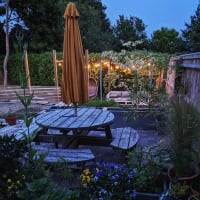This Forum will close on Wednesday 27 March, 2024. Please refer to the announcement on the Discussions page for further detail.
Containers - what’s a minimum size?
 Latimer
Posts: 1,068
Latimer
Posts: 1,068
So I that’s a very open ended question but for general display purposes on a patio, what kind of size would you get?
I think I’ve always been suckered into the 30-40cm diameter ones from the likes of Aldi but I wonder if they’re just a little on the small size, especially when just stood on the ground. They just don’t seem to have much impact and lots of them together just seem a bit “flat”.
I’ve no idea what I’m doing.
0
Posts
If you do have pots already then different heights and shapes work well. Also odd numbers and stick with a plain pot in my opinion let the plants do the talking. Plants such as annuals can look their best when two thirds the height of the pot. However it is also good to break the rules and plant a tall grass in a short pot.
If you want a formal look, go for pots the same size, but that works best if you want a symmetrical 'line' all exactly the same. It suits the edge of a patio or similar as a physical division, or to line path edges. The plants all have to be the same too.
The size of pots has to suit the plant, so you'd certainly want something in that 15 to 18 inch diameter for any sizeable shrub, or if you want a full on display of annuals, depending on what they are of course. Some Petunias or Marigolds will manage in an 8 inch pot whereas Sweet peas or Dahlias won't.
I live in west central Scotland - not where that photo is...